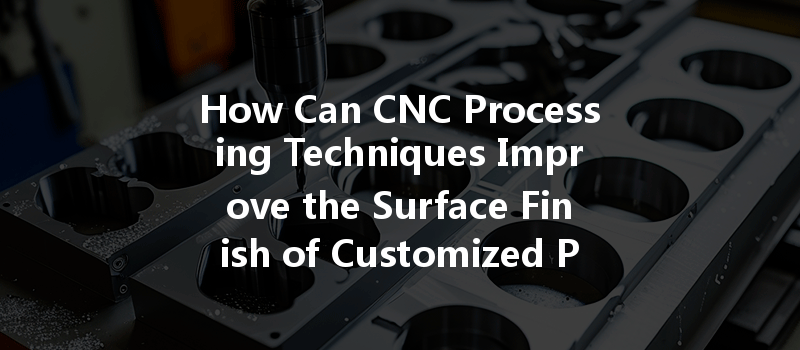In the rapidly evolving landscape of manufacturing, the quality of product surface finish can make or break a project’s success. Did you know that high-quality surface finish is not just about aesthetics? In many industries, such as aerospace, automotive, and medical, the surface finish can impact the performance, durability, and functionality of components. In fact, studies show that a well-finished surface can reduce friction by up to 50%, leading to the extended lifespan of components and reduced maintenance costs.
But how can manufacturers ensure a consistently high surface finish in CNC processing? Let’s delve into this important topic!
Understanding Surface Finish in CNC Processing
Surface finish refers to the texture, smoothness, and quality of a manufactured part’s outer surface. In CNC (Computer Numerical Control) machining, achieving the desired surface finish is essential for functionality, appearance, and the overall quality of the part being produced. Various factors influence surface finish, including material selection, tool wear, speed of operation, type of machining process, and post-processing techniques.
The Importance of Surface Finish
Quality surface finish provides numerous advantages:
Factors Affecting Surface Finish in CNC Machining
The right tooling material and geometry play a critical role in achieving superior surface finish. Tool wear and inappropriate cutting geometries can lead to poor finishes.
Choosing optimal cutting parameters—such as speed, feed rate, and depth of cut—is essential for maintaining the desired surface finish.
The choice of material impacts the machining process significantly.
Using the appropriate coolant and lubrication can drastically improve the surface finish by reducing heat and minimizing tool wear during the process.
The performance of the CNC machine itself can also affect surface quality:

Techniques to Enhance Surface Finish
To improve the surface finish of customized parts during CNC processing, manufacturers can employ various techniques:
Maintaining a close monitoring of machining parameters and environmental conditions allows manufacturers to fine-tune the process.
Using advanced toolpath strategies like helical interpolation and contouring can yield better surface finishes.
Sometimes, additional treatments are necessary to achieve the desired finish:
Implementing surface treatments can fundamentally alter the surface characteristics of CNC machined components.
Finally, investing in the training of operators ensures they are well-versed in best practices for achieving favorable surface finishes.
Case Studies
Let’s examine some successful implementations of improved CNC machining techniques and their outcomes:
Case Study 1: Aerospace Component Machining
A leading aerospace company faced challenges with surface finishes on engine components. By integrating advanced toolpath strategies combined with adaptive control systems, they achieved a 30% improvement in surface quality while reducing time spent on post-processing.
Case Study 2: Medical Device Manufacturing
A manufacturer of surgical instruments implemented electrochemical polishing after CNC machining. This addition not only provided superior surface finishes but also met stricter regulatory standards for medical devices, leading to enhanced customer trust and satisfaction.
Achieving a high-quality surface finish in CNC processing isn’t just about choosing the right tools; it’s a combination of understanding material properties, optimizing machining parameters, and employing advanced techniques. By honing in on these factors, manufacturers can greatly enhance the performance and longevity of their products, cementing their position in competitive markets.
In light of the importance of surface finish, stakeholders need to consider both the immediate benefits of employing these technologies and their long-term impacts. Investing in superior CNC processing techniques not only upholds quality but also fosters innovation and client satisfaction in an increasingly competitive landscape.
Thinking critically about surface finish can help businesses save resources, improve functionality, and elevate customer experiences. By consciously applying the discussed principles, manufacturers can prepare for the future while ensuring the present quality of their products remains top-tier.






